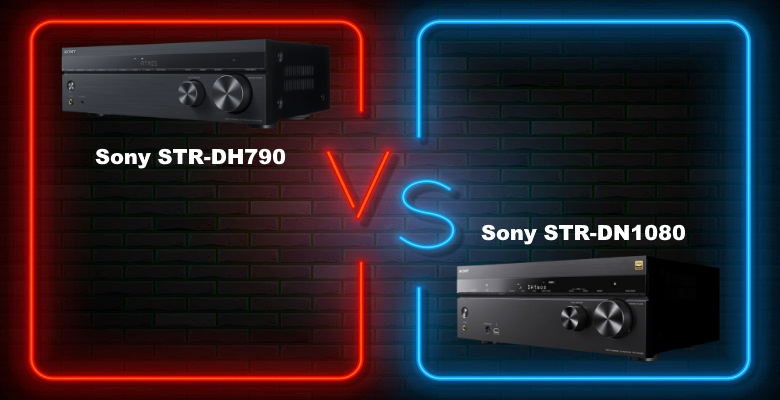When it comes to choosing an AV receiver for your home theater setup, the Sony STR-DH790 and STR-DN1080 are both great options. In this article, we will compare and contrast the Sony STR-DH790 and STR-DN1080 in terms of their features, performance and overall value for money, so you can decide which one is the best fit for your home theater setup (>>> Find on Amazon).
Sony STR-DH790 vs STR-DN1080 Side by Side:
| Sony STR-DH790 | Sony STR-DN1080 | |
|---|---|---|
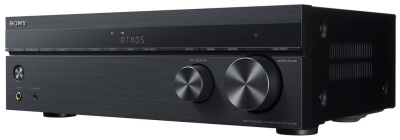 | 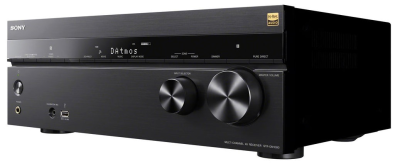 |
|
| Amplifier | 145 W (6 ohms, 1 kHz, 1ch THD 0.9%) | 165 W (6 ohms, 1 kHz, 1ch driven THD 0.9%) |
| Audio features | DECODING FORMAT FOR HDMI • DSD, Dolby Atmos®, Dolby® Digital, Dolby® Dual Mono, DTS: X™, DTS-HD Master Audio™, DTS HD High-Resolution Audio, DTS®, DTS-ES (Matrix6.1/Discrete6.1), DTS 96/24 | SOUND ENHANCEMENT TECHNOLOGIES • DSD Native Playback, DSEE HX, Pure Direct, Sound Optimizer, Center Speaker Lift Up, Digital Legato Linear, In-Ceiling Speaker Mode DECODING FORMAT FOR HDMI • DSD, LCPM, Dolby Atmos®, Dolby® Digital, Dolby® Dual Mono, DTS: X, DTS HD MA, DTS HD HR, DTS, DTS-ES (Matrix6.1/Discrete6.1), DTS 96/24 OTHER FORMAT • [MP3].MP3, [AAC/HE-AAC].m4a, .AAC, [WMA9 Standard].WMA |
| Video | • A/V SYNC • AUDIO RETURN CHANNEL • HDR (HIGH DYNAMIC RANGE) • 4K 60P 4:4:4 SUPPORT • HDMI® PASS THROUGH • 3D OVER HDMI • BRAVIA® SYNC™ (CEC CONTROL) | • A/V SYNC • AUDIO RETURN CHANNEL • HDR (HIGH DYNAMIC RANGE) • 4K 60P 4:4:4 SUPPORT • HDMI® PASS THROUGH • 3D OVER HDMI • BRAVIA® SYNC™ (CEC CONTROL) |
| Connections | INPUT AND OUTPUT TERMINALS • Audio Input Opt (1), Audio Input Coax (1), Analog Audio Input (4), Pre Out Subwoofer (2), Headphone Output (1), USB (for power supply only) SPEAKER OUTPUT TERMINALS • Front A, Center, Surround, Surround Back, Height (Common with Surround Back), Front B (Common with Surround Back), Bi-AMP (Common with Surround Back) | HDMI SUPPORTING HDCP2.2 IN/OUT • 6/2 INPUT AND OUTPUT TERMINALS • Audio Input Opt (1); Audio Input Coax (1); Analog Audio Input (4); Pre Out Subwoofer (2); Composite Monitor Out (1); Headphone Output (1); USB (1 Front); Ethernet Port (1) SPEAKER OUTPUT TERMINALS • Front A, Center, Surround, Surround Back, Zone2 (Common with Surround Back), Height (Common with Surround Back), Front B (Common with Surround Back), Bi-AMP (Common with Surround Back) |
| Smart features | Bluetooth® Receiver, Bluetooth® Transmitter, NFC, AirPlay, Mobile Control Application | Bluetooth® Receiver, Bluetooth® Transmitter, NFC, Wi-Fi®, AirPlay, Mobile Control Application, Wireless Multi-Room |
| Price | Check on Amazon BHPhotoVideo.com | Check on Amazon |
Design
The two receivers have a similar appearance, with a sleek black design and a variety of buttons and inputs on the front panel. However, there are some slight differences between the two.
The STR-DH790 has a more compact design, with a smaller front panel and a lower profile. It also has fewer buttons and inputs, with a more streamlined look overall. The STR-DN1080, on the other hand, has a larger front panel and a more prominent design, with more buttons and inputs, including additional HDMI ports and a USB port.
Winner: Tie
Audio
Amplifier
The STR-DH790 has a 7-channel amplifier, which can output up to 145 watts per channel. This is a powerful amplifier that can drive most speakers in a home theater system. On the other hand, the STR-DN1080 also has a 7-channel amplifier, but can output up to 160 watts per channel. This is a slightly more powerful amplifier than the STR-DH790, which can handle more demanding speakers and provide a higher volume level.
Sound features
Both receivers have support for surround sound formats such as Dolby Digital and DTS, which can create a more immersive audio experience by positioning sound effects around the listener. The STR-DN1080 also has support for advanced surround sound formats such as Dolby Atmos and DTS:X, which can create a three-dimensional soundstage with more precise sound positioning. The STR-DH790 does not have this feature.
Both receivers also have built-in equalizers that allow you to adjust the sound to your preference. However, the STR-DN1080 has a more advanced equalizer with more fine-tuning options, which can be used to create a more precise and personalized sound experience.
Both receivers also have built-in sound enhancement features such as DSEE HX, which can improve the quality of compressed audio, and ClearAudio+, which can create a more detailed and natural sound.
Winner: Sony STR-DN1080
Video
Both receivers have support for 4K resolution, which is a high-definition video format that provides a sharp and detailed image. They also support HDR (High Dynamic Range), which can produce a wider range of colors and brightness levels, resulting in a more vivid and lifelike image. However, the STR-DN1080 is equipped with more advanced HDR format support such as HDR10, HLG, and Dolby Vision, while the STR-DH790 only supports HDR10 and HLG.
Both receivers also have built-in upscaling technology, which can improve the quality of lower-resolution video content by upscaling it to match the resolution of your TV. The STR-DN1080 also has support for 4K HDR pass-through, which allows you to pass the 4K HDR signal from your devices to your TV without any loss of quality.
Both receivers also have support for the HDMI 2.0 standard, which allows for the transmission of 4K video at 60 frames per second.
Winner: Sony STR-DN1080
Connectivity & Smart Features
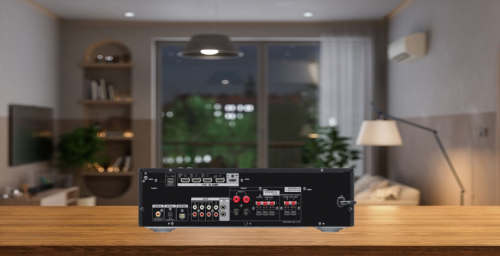
Both Sony STR-DH790 vs STR-DN1080 have a variety of inputs and outputs, including HDMI, optical, and analog inputs, as well as speaker terminals. The STR-DN1080 has more HDMI inputs and outputs (8 in total) compared to the STR-DH790 (6 in total), allowing you to connect more devices. The STR-DN1080 also has a USB port on the front panel, which allows you to connect external devices such as a USB drive or a mobile device. The STR-DH790 does not have this feature.
Both receivers also have built-in Bluetooth and NFC (Near Field Communication) connectivity, which allows you to wirelessly connect to other devices such as smartphones and tablets. The STR-DN1080 also has built-in Wi-Fi connectivity, which allows you to connect to your home network and stream music from online services such as Spotify or Pandora. The STR-DH790 does not have this feature.
The STR-DN1080 also has multi-room audio capability, which allows you to listen to music in multiple rooms of your home at the same time using wireless speakers. The STR-DH790 does not have this feature.
Winner: Sony STR-DN1080

Sony STR-DH790
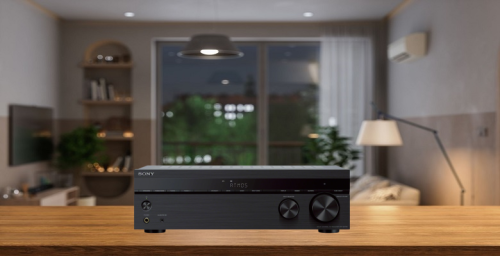
Pros
- Reasonably priced compared to other AV receivers
- Powerful, 145 watts per channel amplifier
- Supports 4K resolution and HDR
- Built-in equalizer
Cons
- No built-in Wi-Fi
- Limited fine-tuning options in the equalizer
Sony STR-DN1080

Pros
- Has built-in Wi-Fi, Bluetooth, and NFC
- Powerful, 165 watts per channel amplifier
- Supports 4K HDR pass-through, which allows you to pass the 4K HDR signal from your devices to your TV without any loss of quality
- More HDMI inputs and outputs: The receiver has 6 HDMI inputs and 2 outputs allowing you to connect more devices.
- Has a more advanced equalizer with more fine-tuning options
Cons
- Priced higher compared to the STR-DH790
Conclusion
The Sony STR-DH790 and STR-DN1080 are both great AV receivers that can enhance your audio and video experience. However, when it comes to advanced features, the STR-DN1080 is a better choice (>>> Check on Amazon). It offers advanced connectivity options such as built-in Wi-Fi, Bluetooth, and multi-room audio capabilities, which allow you to connect to other devices and stream music from online services. It also supports advanced surround sound formats such as Dolby Atmos and DTS:X, and advanced HDR formats such as HDR10, HLG, and Dolby Vision, which can create a more immersive audio and video experience. Additionally, it has more HDMI inputs and outputs, 4K HDR pass-through and an advanced equalizer. The STR-DH790, on the other hand, is a budget-friendly option that offers standard features such as 4K and HDR support, but it lacks some advanced features. Ultimately, the choice between the two receivers depends on your budget, your desired features, and your overall needs for your home theater setup.
